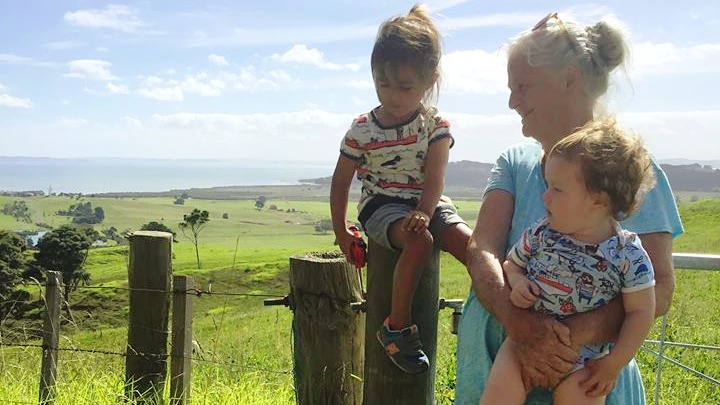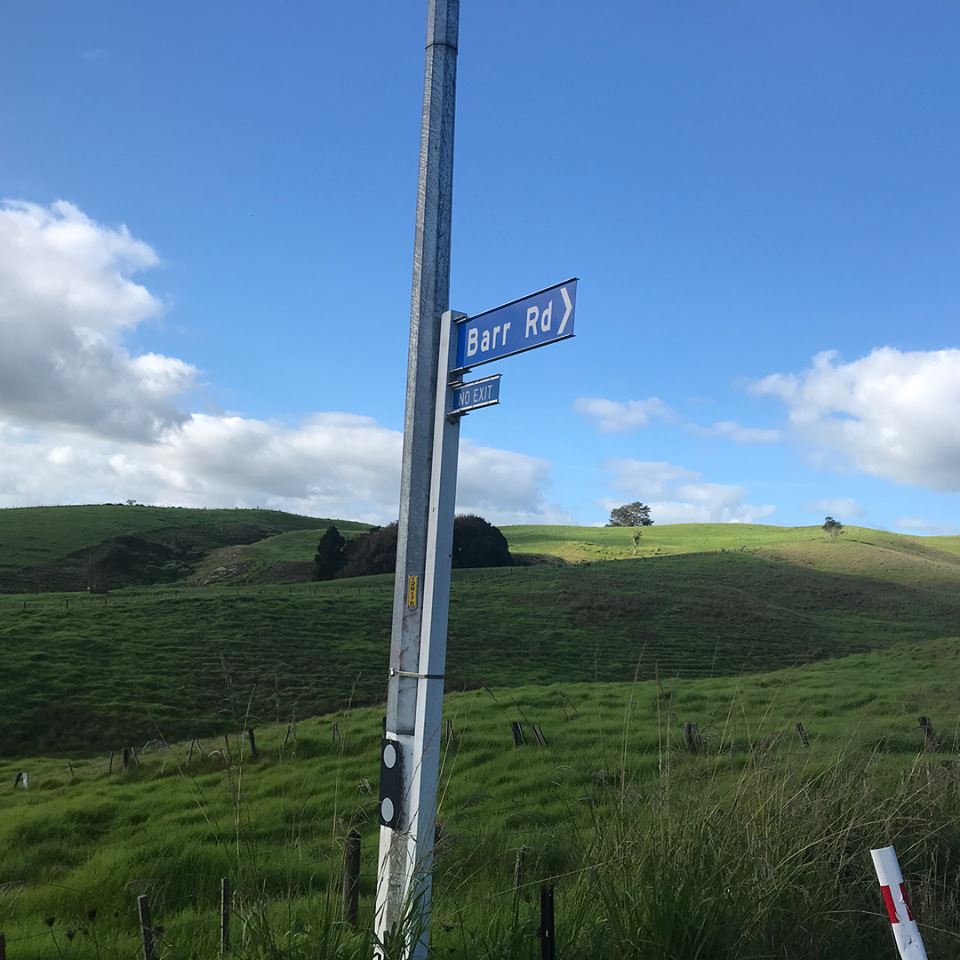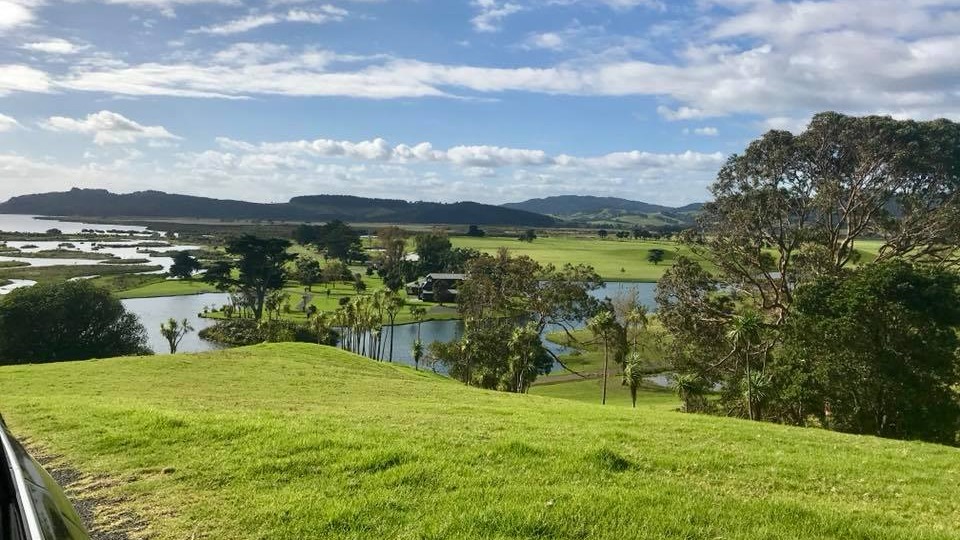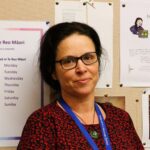Books aren’t the only place to find stories. Some of the most important and meaningful stories are passed down through generations, strengthening our connections to land, whānau, whakapapa. Kura Rutherford shares what family storytelling means to her.

I first experienced the ability of family storytelling to heal and transform at my nana’s tangi, at Te Kia Ora marae in Kaipara. I was ten years old; it was one of the first times my siblings and I had spent a night on a marae.
The fog had settled in around the Kaipara Flats, and all the family were safe inside the wharenui, keeping Nana company through to the dawn. During that night, we made our farewells to Nana. Grandpa and aunties and uncles talked about the people gone before, and the people who couldn’t be there with us. We talked about Nana, and memories of times on the farm. Through story, we became more connected to who we were as a whānau, stepping deeper into our whakapapa, which took us from Kaipara, to Dargaville, to Hokianga Harbour, and Aberdeen and Ireland, and through it all, our memories of Nana were woven together with our grief.
Through story, we became more connected to who we were as a whānau, stepping deeper into our whakapapa…
It was thanks to the generosity of the close community in Kakanui, Kaipara,and the long-standing connection between Nana and Grandpa and the local iwi, Ngāti Whātua o Kaipara, that our family had the privilege of experiencing Nana’s passing in such a significant way.
In that environment, we were surrounded by the stories that connected us to the hills and long tides of the Kaipara harbour. But we were also surrounded by so many of the other stories that exist deep within te ao Māori, and a history far beyond our own family’s three generations in Kaipara. That is, the stories captured within the wharenui, Te Kia Ora, celebrated and held sacred in the carvings, and in the tukutuku panels, by the stories given breath through the karanga and waiata, and through the speeches made on the paepae – stories being passed down through generations.
At Nana’s tangi, we experienced the therapeutic value of conscious storytelling, and research reinforces that idea – that a child’s identity and sense of self is strengthened by hearing stories that ground them to family, to place, and to communities.
[A] child’s identity and sense of self is strengthened by hearing stories that ground them to family, to place, and to communities.

In a New York Times article, ‘The Stories that Bind Us’, a clinical psychologist Sara Duke promotes the benefit of storytelling, ‘[Children] who know a lot about their families tend to do better when they face challenges,’ she says. ‘In those early years children are working on establishing and trying to understand their identities. Stories about themselves and their families help them feel safe, help them belong and clarify who they are.’
This understanding of the connection between storytelling and belonging is intuitive in many cultures – deeply so in te ao Māori – but in everyday life, it can be hard to create the space and reason to tell family stories.
During the nightly routine of putting children to bed, sometimes storytime feels more like a race to a finish line than a comforting ritual.
During the nightly routine of putting children to bed, sometimes storytime feels more like a race to a finish line than a comforting ritual. I definitely find it easier to choose a book from the stack, and read someone else’s story, and to use someone else’s voice.
But often in those moments, when I am creeping to claim the sofa and sign off at the end of the day, I hear that appeal for ‘just one story about when you were young.’ It turns out children can’t get enough of stories about the times we struggled, or overcame, or when we met our match; stories with a beginning, a middle and an end, that give form and meaning to our lived experience.
Standing there in the doorway, in the quiet, I know it’s up to me to decide what is most important. Sometimes the call from the sofa is too loud, but sometimes I do manage to turn myself around. Stepping out of my own preoccupations can be hard, but casting my mind back to capture and order one of my memories into a story is always worth the effort – for my children, and for me.
Those moments make me grateful for all the ways that my parents found to keep our stories alive and well; the stories my mum tells us at Matariki every year. The long letters my dad still writes that take us back and forth through his life and world travels, returning to his childhood in the backblocks of Taranaki, and the smell of the speedway. The fishing stories my partner’s dad recalls on his visits to us, and the stories my partner’s mum told us while she lay in her room at Whangarei Hospice – memories of Christmas in Paris, and of scarcity in wartime Europe.
[These stories] may never make it into a children’s book, but will still have had as much effect on us as all of our favourite children’s books put together.
These stories are just some of those that live in families, and that we hand down through the generations; the stories that may never make it into a children’s book, but will still have had as much effect on us as all of our favourite children’s books put together. All the little stories that build up,and eventually meld together to become part of our fuller life story, individually and collectively.
This weekend I went to Auckland for a family gathering, the first for a very long time. There we were, all the clan –siblings, cousins, aunties and uncles – bound together by stories and memories. While I flew home, my mum and my sisters drove up through the Kaipara, past where Nana and Grandpa are buried, past the country hall where mum and her siblings attended their first dance, past Te Kia Ora marae, and the homestead. They stopped to look down on the land where generations of the family farmed the Araparera hills. Seeing the photos they took on the drive north brought up more stories. All those stories that bind us as a family, and make us stronger for knowing them.


Kura Rutherford
Kura Rutherford (Te Rārawa, Ngāpuhi) is a school librarian, writer and editor, who lives in Tāmaki Makaurau. She grew up in Hokianga and Grey Lynn, before moving to Hawke’s Bay for 20 years with her husband, Dominic, to bring up their three daughters. She worked for 10 years in public libraries in customer service and community roles before becoming the sole charge school librarian at Taikura Rudolf Steiner School in Hastings. Now having returned to Tāmaki with her family, she works in the same role at Michael Park School in Ellerslie. She has been connected to Steiner education since she was 23 when she and her husband worked for a year at Hōhepa Farm in Hawke’s Bay, and all three daughters have attended Steiner schools. Kura’s writing focus is on health, education and literature, and she has written for The Sapling, Good magazine, EBSCO databases, Magpies magazine, and craft magazine Extracurricular. She has a special interest in supporting organisations in their te reo Māori strategic planning and development aspirations.



